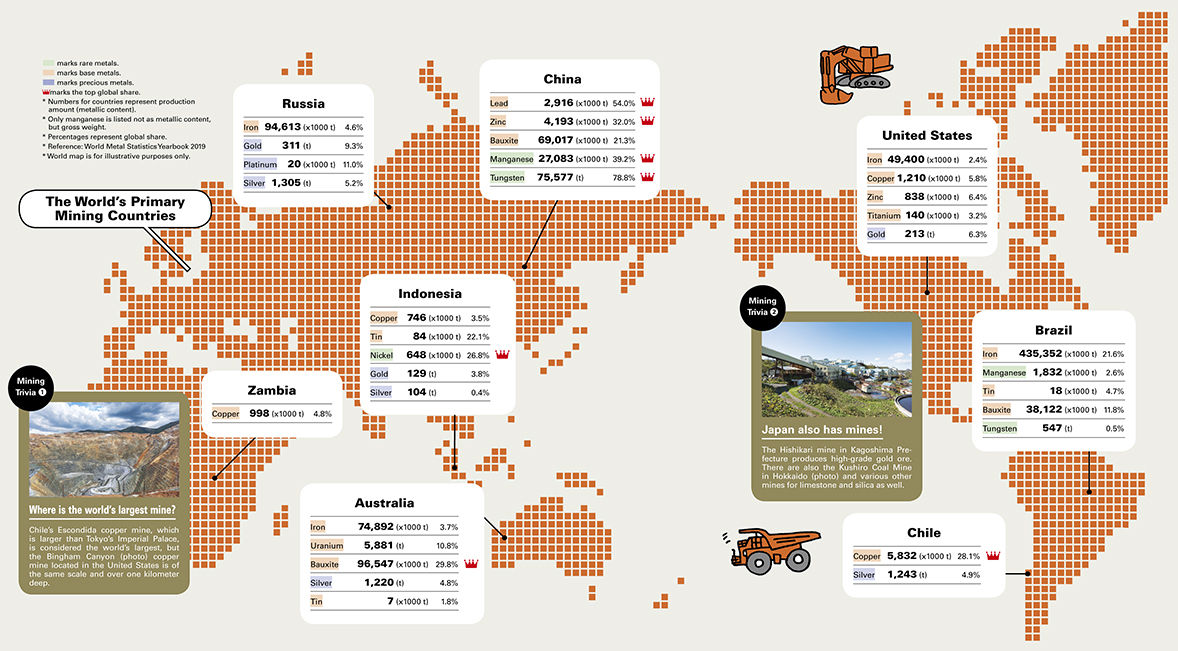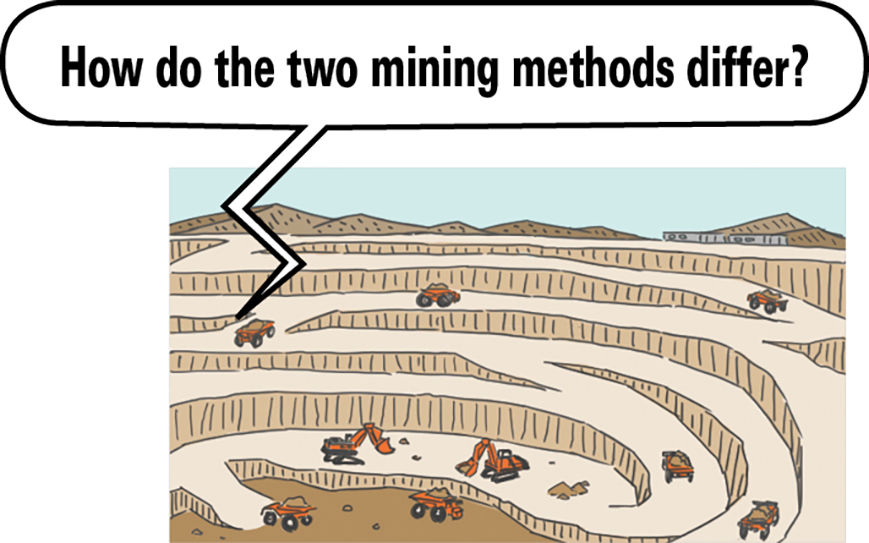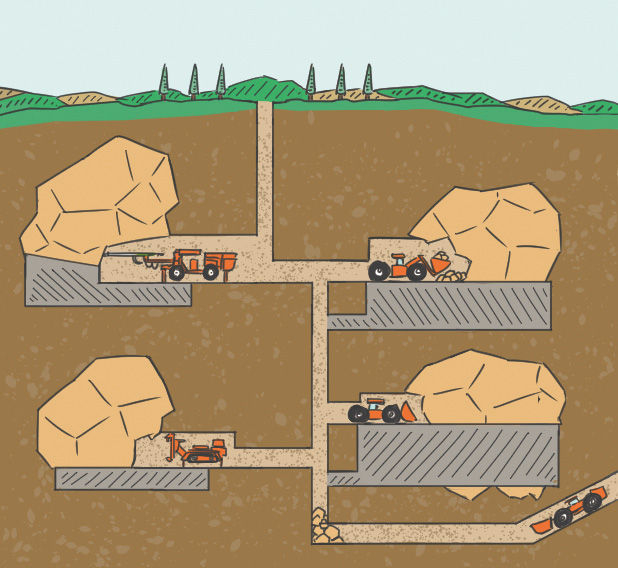Mining 101

Basic Mining Knowledge in Pictures
Even if you have a general idea of what mining consists of, you’ve probably never seen the mining process or a mining site in person and there are many things you don’t know about it. How and in what countries are minerals excavated and used in the manufacture of products? Let’s start with some basic mining knowledge.
Text by Toshiaki Saito Editorial supervision: Japan Oil, Gas and Metals National Corporation (JOGMEC)

Digging up Mineral Resources that Improve Human Lives
Simply put, a mine is a place where people excavate for “ore.” As long as it’s where people excavate for ore, it’s called a mine, whether in the mountains or on flat land.
So what is this ore? The word ore describes rock that is economically worth digging up because it contains minerals rich in valuable metals that contribute to people’s lives and industry. Gold ore, which contains gold, and iron ore, which contains iron, are well-known examples, but rock that contains silver, copper, tin, zinc, aluminum or rare metals like man-ganese and nickel that have become much talked about in recent years is also called ore.
“Mining” is the work of digging up ore from the mineral deposits where it is found. In the case of copper, the actual copper to be mined makes up only about 0.3 to 1% of the overall ore.
Excavated ore requires a process called “beneficiation,” which separates useful minerals from the rest of the ore. The useful minerals collected through beneficiation are called “concentrates,” and after they are transported to smelters by truck, rail, pipeline or boat, they undergo another process called “smelting.”
Through this process the minerals are made into metals and can then finally be used as materials for various products we use in our daily lives, ranging from buildings and vehicles to smartphones, or for infrastructure such as power lines.
Broadly speaking, there are two methods of excavating ore: “surface mining” and “underground mining” (see images on the right). Hand drilling dependent on human labor used to be the norm, but in modern times, now that technology has developed sufficiently, large-scale mining using machinery has become commonplace. The progress of technology has had a large impact on the mining of mineral ore. In recent years technological development and pilot projects have even begun for mining seafloor resources such as hydrothermal deposits.
When we look at the world’s primary mining countries on the other hand, we see that each country has unique characteristics.
For example, China produces a lot of lead and zinc, Chile produces copper, and Australia produces iron, bauxite and uranium. China is also characterized by its abundance of rare metals like manganese and tungsten. These days, African countries like Zambia and South Africa have been gaining attention as well. Zambia’s economy in particular is supported by copper and Hitachi Construction Machinery is focusing on the country by establishing local production, sales, and service bases, for example.
Today, the mining industry has been exploring sustainable development and uses. There are initiatives to minimize the negative influence on the surrounding environment and produce new value, such as by rehabilitating a mine through greening and stabilizing it after its closing or by using it as a location for tourism.
Daily progress is being made to improve the efficiency and productivity of mining, as well as work safety, through the automation of machines that run in mining sites and the promotion of operation by centralized management systems.





